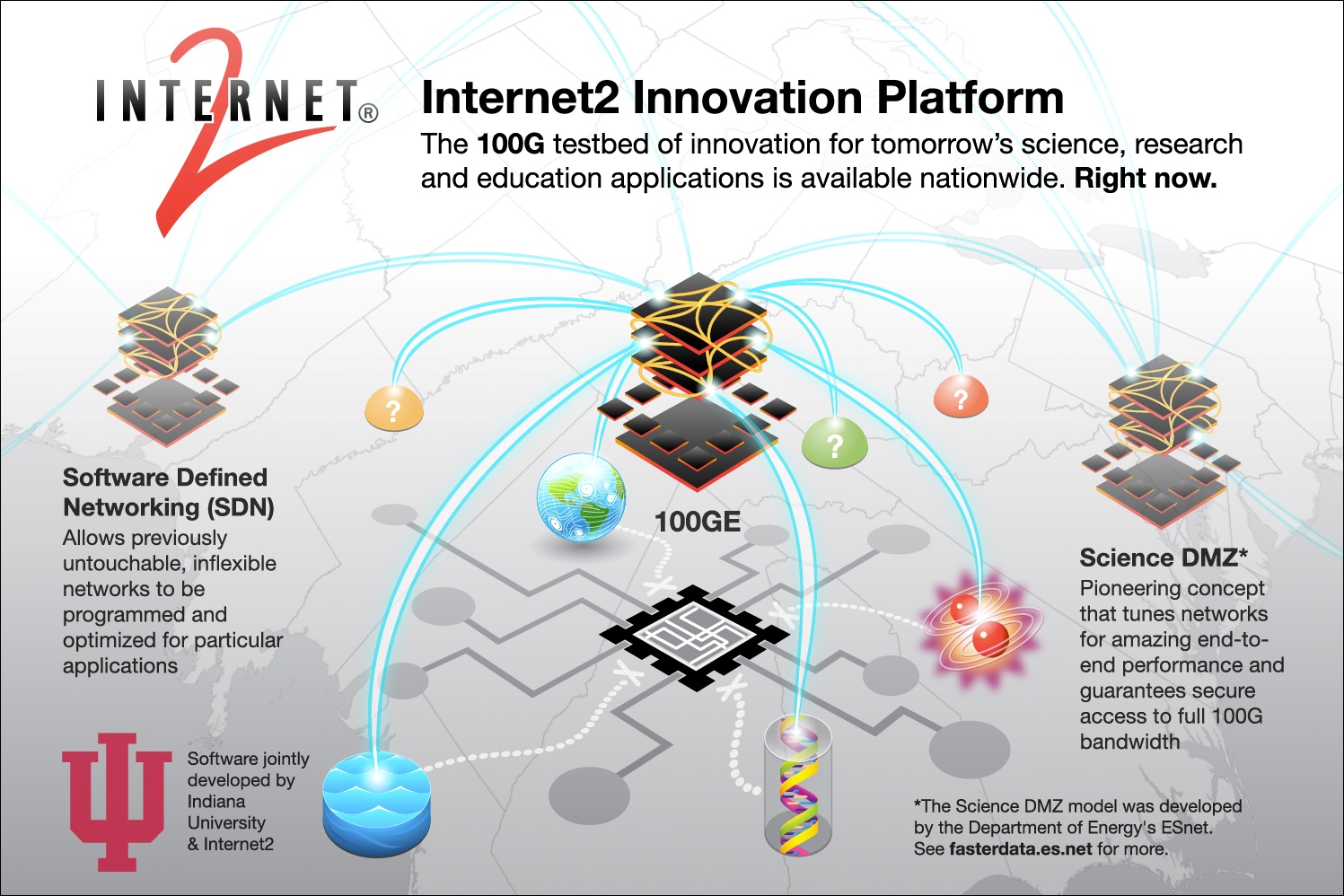
Internet2 Puts Big Data Pedal to the Metal
Internet2, an advanced networking consortium that is led by leaders in the U.S. academic and research space is taking new steps to meet the challenges of the big data era via a new platform.
 The group has been at the forefront of academic computing and network innovations since its inception in 1996 with a blend of human, IP and optical networks designed to make massive data faster.
The group has been at the forefront of academic computing and network innovations since its inception in 1996 with a blend of human, IP and optical networks designed to make massive data faster.
Internet2 is hard at work on the United States’ first open software-driven network (SDN) to round out their newest project, called the Innovation Platform. This week, 300 Internet2 network engineers gathered at the Summer 2012 ESCC/Internet2 Joint Techs meeting at Stanford University with the objective being to release the platform at its end.
In addition to approaching the SDN itself, the group will also examine a number of other issues, including integration of services across multiple networks, new, converged technology services, network monitoring and performance diagnosis tools, network security, and IPv6: the coming crisis in routing and addressing.

“Software driven networking (SDN),” says Rob Vietzke, Internet2’s Vice President of Network Services, “is the concept where you start to think of the network as another part of the compute environment where you can program it just as easily as you can program storage or visualization.” Internet2’s hope is that the Innovation Platform will allow universities to interact in a similar environment as which created innovations such as Google and Facebook, but with higher data capabilities. Per Internet2, twenty institutions have signed on to test the platform.
One advantage of the SDN, which recently added 100G Ethernet OpenFlow-enabled routers from Brocade and Juniper at 35-45 sites, is the potentially remarkable development of new applications. The programmable environment of the network would allow greater innovation by ‘slicing’ the network into isolated sections specifically designed for application development. Duffy writes, “It may allow Internet2 to build an SDN ‘application store’ to allow developers to offer new applications on a trial basis to the research and education community.”
Science has long been waiting for computing to catch up with the massive data and bandwidth requirements necessary to collaborate with fellow researchers. Vietzke hopes Innovation Platform is up to the task. “We’re taking some of the transformative technologies,” concludes Vietzke, “like OpenFlow and software defined networking and the capabilities we have in our new network to provide mass amounts of bandwidth ahead of the demands that are coming out of the science and engineering communities around things like the big data initiative.”
As Jim Duffy writes, “Innovation Platform will allow member institutions to keep pace with the exponential growth in massive datasets generated by scientific research conducted by collaborative researchers in U.S. labs and universities.”
A previous piece here at Datanami noted how Dr. Michael Snyder, Director of Stanford’s Center for Genomics and Personalized Medicine, would send physical hard drives to those interested in his genomics data since it was too large to send electronically. The Innovation Platform could potentially remove that barrier. “We’re trying to reduce bottlenecks in the network,” says Vietzke, “our partners at DSNet have introduced the concept of Science DMZ that allows you to think very differently about very large data-intensive flows across borders within networking environments.”
Related Stories
Midwest Growing Hub for HPC, Big Data
Stanford Pushes Genetic Research Data to Limits
Open Source Testbed Targets Big Data Development






























